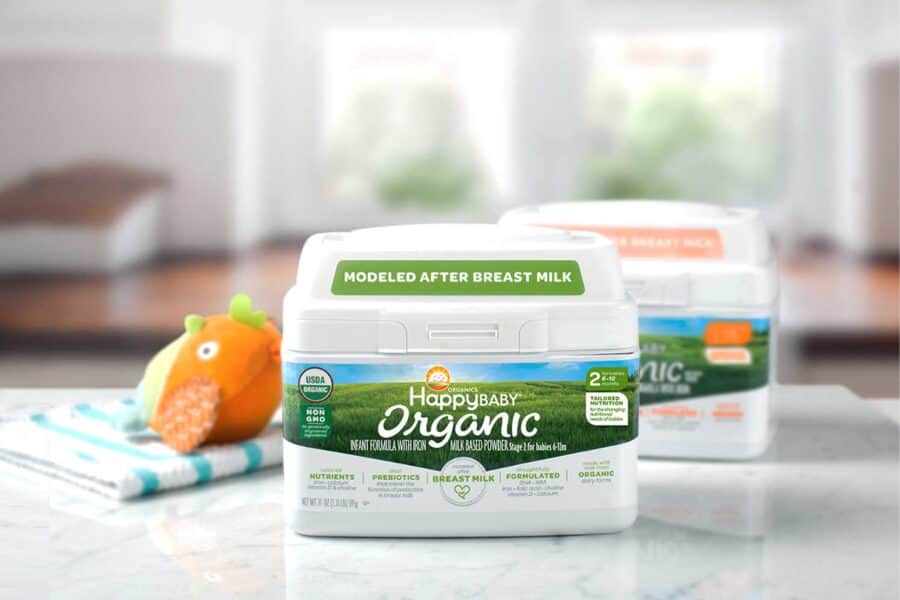Lemon herb tahini’s PR is at its all time heights, and honestly – we get it. Infused with zesty lemon, sesame seeds, and aromatic herbs, this vegan lemon herb Tahini recipe brings a fresh, tangy flavor that uplifts the dinner table and brings all side dishes together.
This Mediterranean and Middle Eastern condiment deserves a place on your table. TheIts versatility of this condiment extends from classic dips like hummus to dressings and sauces, as its nutrient-rich and tangy flavor adds to the richness and depth of each bite.
Alright! Let’s move ahead. We’ll show you how to make lemon herb Tahini at home. We also have a few tips, serving suggestions, and flavor ideas to nail this dip.
Let’s get to it, shall we?
Simple, Seven Step Lemon Herb Tahini Recipe
There are few delights in the world that can match the vibrancy of a zingy lemon herb tahini. Let’s learn this simple recipe that is a delight for your taste buds and nourishing for your body and soul.
Ingredients

Seseme Seeds/Tahini Paste: Opt for high-quality, seseme seeds or organic tahini for the best flavor and texture.
Fresh Lemon Juice: Use freshly squeezed lemon juice for its bright, zesty flavor.
Olive Oil: Select extra virgin olive oil for its fruity notes and richness.
Garlic: Use fresh garlic cloves for a pungent kick of flavor.
Salt and Pepper: Enhance the flavors with high-quality sea salt and freshly ground black pepper.
Lemon Herb Tahini: Step by Step Recipe

Step 1: Take homemade tahini with seseme seeds, or get started with a well-mixed and smooth tahini paste.
Step 2: Squeeze fresh lemon juice into the tahini, starting with a smaller amount and adjusting to taste. The lemon should add to the tanginess of the dish, without overpowering it.
Step 3: Finely chop your selection of fresh herbs. Parsley, cilantro, and dill work wonderfully together but feel free to experiment with your favorites.
Step 4: Mince garlic cloves finely or use a garlic press for a smoother texture.
Step 5: Drizzle in olive oil gradually, blending as you go, until you achieve the desired consistency. You want the tahini to be creamy and pourable, but not too thick.
Step 6: Season with salt and pepper to taste, keeping in mind that you can always add more but can’t take it away. Start with a pinch of each and adjust as needed.
Step 7: Blend all the ingredients until smooth and creamy, scraping down the sides of the blender or food processor as needed.
That’s it! The lemon herb tahini is ready to be served. Not sure if it is perfect? See the tips below to get it right, always!
How To Customize Lemon Herb Tahini With Different Flavors

Depending on various flavour preferences, here are a few tips to make your own version of lemon herb tahini:
Tip 1: For a spicier kick, add a pinch of red pepper flakes or a dash of hot sauce.
Tip 2: Experiment with different herbs, such as basil, mint, or chives, for unique flavor combinations.
Tip 3: Substitute some of the olive oil with water for a lighter consistency.
Tip 4: Add a touch of honey or maple syrup for a hint of sweetness to balance the acidity of the lemon.
Tip 5: Roast the garlic before adding it for a milder, slightly sweet flavor.
You might ask, Why not just buy it from stores and save some time? Here’s why!
Should You Make Lemon Herb Tahini At Home?

Apart from how delicious a freshly made lemon herb tahini tastes, perhaps even more compelling is the eco-conscious ethos it embodies. From its humble beginnings as a blend of simple, natural ingredients to its role in promoting sustainable living, every aspect of this recipe reflects a commitment to mindful eating and environmental stewardship.
By choosing locally sourced, organic ingredients and embracing homemade alternatives to store-bought condiments, you’re reducing your carbon footprint, supporting local farmers, and reducing food waste.
And don’t worry, this homemade lemon herb tahini will not let you down. Let’s look into some serving suggestions to make your lunch, brunch or any gathering a flavorful experience.
What to Serve Lemon Herb Tahini With

Explore its versatility as a dip for fresh veggies, a dressing for salads, a sauce for grilled proteins, or a marinade for roasted vegetables. For an extra touch of creativity, drizzle it over grain bowls or use it as a flavorful spread for sandwiches and wraps. The possibilities are as endless as your imagination.
Dressing for Salads and Grain Bowls: Drizzle lemon herb tahini over fresh salads or grain bowls for a burst of flavor and creaminess.
Dip for Fresh Vegetables and Pita Bread: Serve as a dip alongside crisp veggies and warm pita bread for a nutritious and satisfying snack.
Sauce for Grilled Meats and Roasted Vegetables: Use as a sauce to enhance the flavor of grilled meats or roasted vegetables, adding depth and richness to your dishes.
Marinade for Tofu, Chicken, or Fish: Marinate tofu, chicken, or fish in lemon herb tahini for a flavorful and tenderizing twist before cooking.
Spread for Sandwiches and Wraps: Add this to your sandwiches or wraps for a creamy and tangy addition that elevates every bite.
Pairing Lemon Herb Tahini with Complementary Flavors: Pair with fresh, seasonal ingredients like cucumber, tomatoes, and avocado for a harmonious blend of flavors.
Lemon Herb Tahini with pasta: Add lemon herb tahini into pasta dishes, stir-fries, or desserts for a unique and flavorful twist.
Also read: Eco-Friendly Green Onion Dip
You see now? Whether it’s a casual lunch or a special dinner, lemon herb tahini adds bounties of flavor to any dish. You can also prepare it in bulk beforehand. Here’s how you can store it for use later.
How To Store Lemon Herb Tahini?

As with all homemade and store-bought dips, you must be careful with the storage and shelf life. To prolong the freshness and flavor of your homemade lemon herb tahini, you must store it in an airtight container in the refrigerator, and always scoop it out with a dry spoon.
This way, it will keep well for up to one week, ensuring that you always have a delectable and nutritious condiment at your fingertips.
Incredible Health Benefits of Lemon Herb Tahini
Lemon herb tahini can provide a range of health benefits, from supporting bone and heart health to boosting immunity and aiding digestion, while being a delicious addition on to your snacks and meals. Here’s a list of great health benefits from this delectable side dip.

Nutrient-Rich Base: Tahini, made from sesame seeds, is a nutritional powerhouse. Packed with essential minerals like calcium, iron, and magnesium, it supports bone health, boosts energy levels, and enhances overall vitality.
Heart-Healthy Option: Lemon herb tahini, rich in healthy fats, helps lower bad cholesterol levels, reducing the risk of heart disease when part of a balanced diet.
Energy Boost: Tahini provides fuel for the body’s tissue repair and growth. Its healthy fats ensure a steady release of energy, keeping you energized throughout the day.
Immune Support: Infused with lemon, this blend offers a significant dose of vitamin C and antioxidants. Vitamin C boosts immune function by enhancing white blood cell production, while antioxidants protect cells from damage caused by free radicals.
Digestive Aid: Tahini’s dietary fiber content promotes digestive health by regulating bowel movements, preventing constipation, and supporting the growth of beneficial gut bacteria. The addition of herbs like parsley and cilantro further aids digestion with their natural enzymes and anti-inflammatory properties.
Ready to Give It a Try?
See, that was easy! Six pantry staples, a seven step process, and that’s all. Lemon herb tahini is fresh, tasteful, and incredibly healthy for you. What more can you ask from a simple dip?
Now that you have seen the process, and read all about the benefits, it’s time to give it a try yourself. Share this recipe with your friends and family. Interested in learning more? Join our community of eco-nourish food enthusiasts. Get started here.
Frequently Asked Questions (FAQs)
What is lemon herb tahini sauce made of?
Lemon herb tahini sauce typically consists of tahini paste, fresh lemon juice, chopped herbs (such as parsley, cilantro, or dill), garlic, olive oil, salt, and pepper.
How to make Cava lemon herb tahini at home?
Make Cava’s lemon herb tahini at home by whisking tahini with lemon juice, water, garlic, parsley, cilantro, mint, salt, and optional cumin and cayenne. Adjust consistency with water, taste, and serve as a dip or sauce. Refrigerate leftovers for up to a week.
What is lemon tahini dressing made of?
Lemon tahini dressing typically contains tahini paste, fresh lemon juice, water (or olive oil), garlic, salt, and pepper. Additional ingredients like herbs or spices may be added for flavor.
Do you need lemon juice for tahini?
Tahini can seize or become thicker when mixed with lemon juice due to the acid in the lemon juice causing the proteins in the tahini to coagulate. Adding water or olive oil and stirring vigorously can help smooth out the mixture and restore its creamy consistency.








